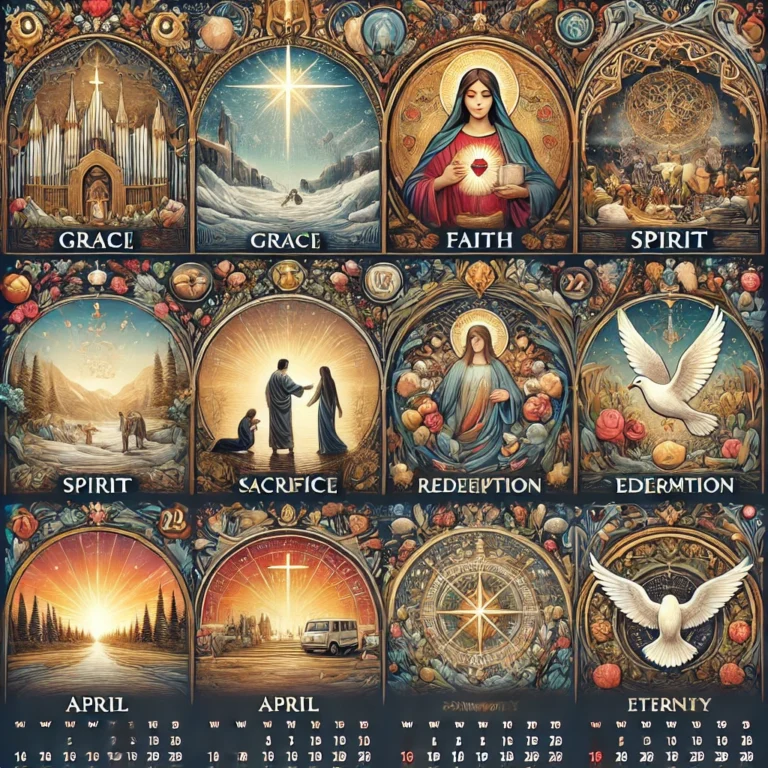The Bible presents a rich tapestry of human relationships, cultural practices, and divine principles. Among these is the practice of polygyny, where one man has multiple wives. This article will explore the biblical view of polygyny, its historical context, and theological implications, while contrasting it with the prohibition of polyandry (a woman having multiple husbands). By the end, readers will understand why the Bible tolerates polygyny in certain contexts and explicitly opposes polyandry, reflecting both divine order and societal structures.
Introduction to Polygyny in the Bible
Polygyny appears prominently in the Old Testament, with figures like Abraham, Jacob, David, and Solomon engaging in the practice. While the Bible does not explicitly command polygyny, it records it as a cultural norm in ancient societies. However, the allowance of polygyny does not imply divine endorsement but rather reflects a concession to human weakness and societal needs.
At its core, the Bible emphasizes God’s original design for marriage as a monogamous union between one man and one woman. This ideal is established in Genesis 2:24, where it states, “A man shall leave his father and his mother and be united to his wife, and they shall become one flesh.” This foundational verse underpins the theological framework for marriage throughout Scripture.
Historical Context of Polygyny in the Old Testament
In ancient Near Eastern cultures, polygyny was often practiced for practical and social reasons, including:
- Economic Stability: Wealthy men could afford multiple wives, who often increased household productivity and status.
- Procreation: In societies where survival depended on lineage, polygyny ensured the continuation of a man’s name and inheritance.
- Political Alliances: Kings and rulers, such as Solomon, used marriage to forge alliances with other nations.
The Bible records these practices without necessarily endorsing them. For instance:
- Abraham: Took Hagar as a concubine at Sarah’s suggestion (Genesis 16:1-4). This arrangement led to significant family strife, illustrating the complications of polygyny.
- Jacob: Married Leah and Rachel, along with their maidservants, resulting in jealousy and rivalry (Genesis 29-30).
- David and Solomon: While David had multiple wives, Solomon’s excessive polygyny (700 wives and 300 concubines) ultimately turned his heart away from God (1 Kings 11:1-4).
These examples show that polygyny often led to conflict, highlighting its deviation from God’s ideal for marriage.
Theological Implications of Polygyny
- Tolerated but Not Endorsed:
- Polygyny is presented as a deviation from God’s design, yet it was tolerated under the Mosaic Law. Deuteronomy 21:15-17, for instance, outlines inheritance laws for children of multiple wives, regulating the practice rather than prohibiting it.
- Warnings Against Excess:
- Deuteronomy 17:17 warns kings not to “multiply wives,” as this could lead their hearts astray. Solomon’s example demonstrates the validity of this warning.
- God’s Patience and Purpose:
- The Bible often illustrates God’s patience with human imperfection. Polygyny is one such example, where God worked within cultural norms to fulfill His purposes (e.g., the twelve tribes of Israel born to Jacob’s wives and concubines).
New Testament Perspective on Marriage
The New Testament shifts the focus back to monogamy as the standard for Christians:
- Jesus Reaffirms Monogamy: In Matthew 19:4-6, Jesus quotes Genesis 2:24, emphasizing that marriage involves two people becoming “one flesh.”
- Christian Leaders: 1 Timothy 3:2 requires elders to be “the husband of one wife,” underscoring the expectation of monogamy in Christian communities.
- Equality in Marriage: Passages like 1 Corinthians 7:2 promote fidelity and mutual respect in marriage, applying the same standards to both men and women.
Why the Bible Prohibits Polyandry
While the Bible tolerates polygyny in some contexts, it explicitly forbids polyandry. This distinction reflects both cultural norms and theological principles:
- Cultural and Lineage Concerns:
- In ancient societies, inheritance and lineage were traced through the male line. Polyandry would create uncertainty regarding paternity, complicating inheritance rights and family structures.
- Divine Order:
- The Bible emphasizes a hierarchical structure within marriage, with the husband as the head of the household (Ephesians 5:23). Polyandry disrupts this structure by introducing competing authorities within a marital relationship.
- Sexual Morality:
- The Bible consistently upholds strict sexual ethics. Women are repeatedly instructed to be faithful to their husbands, and adultery is condemned for both genders (Exodus 20:14). Polyandry would inherently conflict with these principles.
- Explicit Prohibitions:
- Verses like Romans 7:2-3 state that a married woman is bound to her husband as long as he lives, and taking another husband would make her an adulteress. This clarity underscores the biblical stance against polyandry.
Polygyny vs. Polyandry: A Biblical Contrast
| Aspect | Polygyny | Polyandry |
|---|---|---|
| Biblical Mention | Explicitly described and regulated | Explicitly prohibited |
| Cultural Acceptance | Common in ancient societies | Rare and culturally unacceptable |
| Theological Basis | Tolerated but not ideal | Viewed as inherently sinful |
| Family Structure | Maintains clear lineage | Creates uncertainty in lineage |
| Moral Framework | Reflects patriarchal norms | Conflicts with biblical sexual ethics |
Lessons for Modern Readers
- God’s Standards Are Timeless:
- While polygyny was tolerated in certain contexts, monogamy remains the ideal and final standard for marriage as reaffirmed by Jesus and the apostles.
- Equality in Marriage:
- The New Testament emphasizes mutual respect and fidelity in marriage, holding both men and women to the same moral standards.
- Cultural Context Matters:
- Understanding the historical and cultural backdrop of biblical accounts helps modern readers appreciate the progression toward God’s ultimate design for marriage.
Conclusion
The Bible’s accounts of polygyny and its prohibition of polyandry reflect both the cultural norms of the time and God’s overarching principles. While men like Solomon and David engaged in polygyny, these practices often led to conflict and strayed from God’s ideal for marriage. In contrast, polyandry is explicitly forbidden, as it conflicts with divine order, family structure, and sexual morality.
Ultimately, the Bible teaches that marriage is a sacred covenant between one man and one woman, designed to reflect God’s love and commitment to His people. This ideal, reaffirmed in the New Testament, serves as a timeless standard for believers today.




